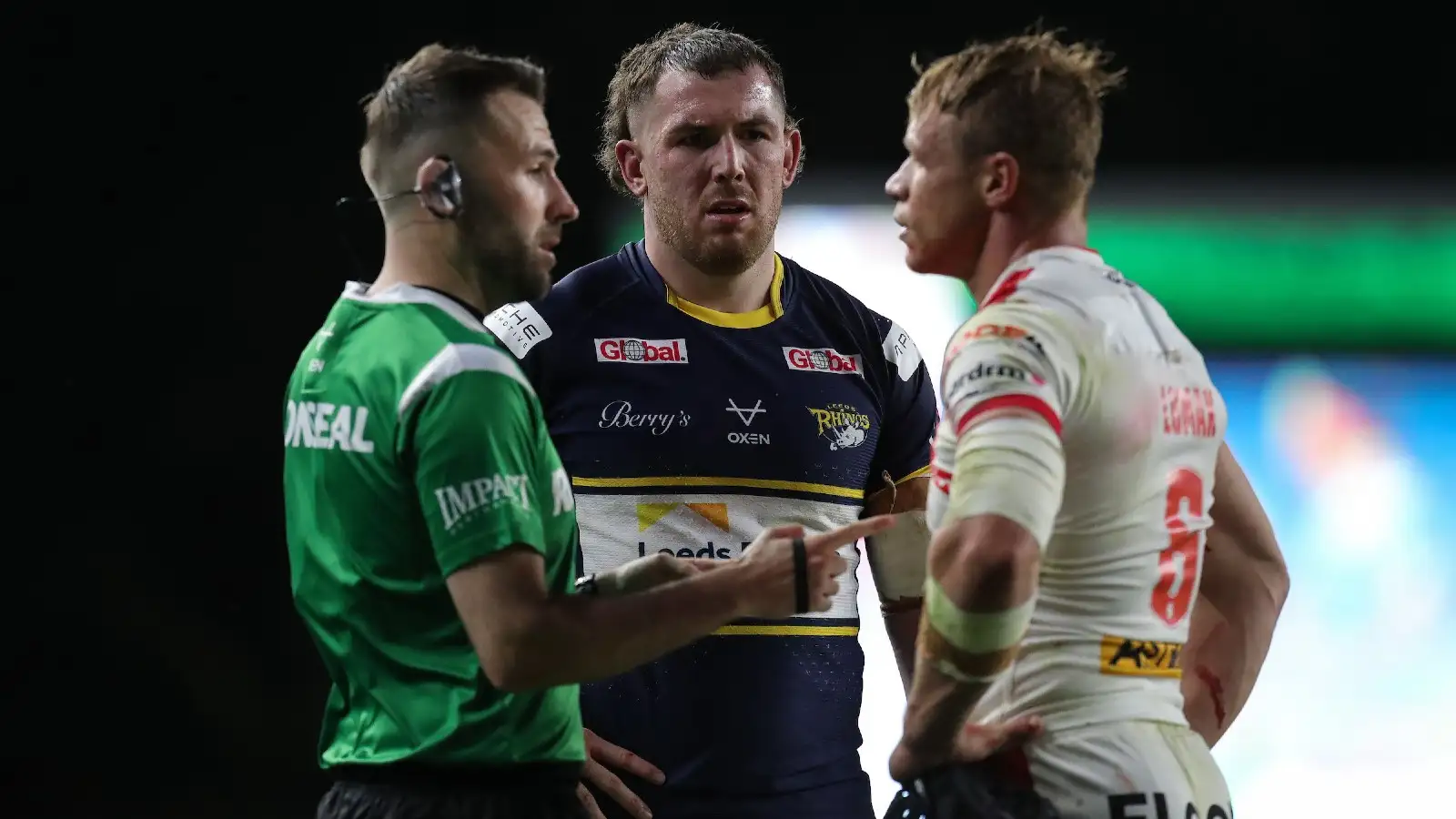Reducing 80 minute games and old offside rule were considered ahead of law change trial

What the future of rugby league could look like may become evident this week, when the RFL’s planned law modifications are trialled in the academy game.
Bradford and Leeds will have the honour of playing the first game without traditional half-way line kick-offs – instead, kick-offs will take place from the opposing side’s 40 metre line.
The more significant change is that of the tackle height, which is expected to bring an increase in penalties while players adjust to the new guidelines.
The legal tackle height will be reduced to below the armpit at initial contact, with penalisation for contact on the head and neck at any point.
With most concussions and head accelerations being caused by contact with the head and neck, it is thought that reducing the tackle height to below the armpit will thus lower the risk of high tackles targeting the head and neck area.
A tackle around the shoulder will be deemed high, with the thinking that over time, tackle techniques and positioning will change to adapt to the change.
The trial will take place over the next four rounds of academy fixtures, with the intention to roll it out to other areas of the game if its effectiveness is backed up by data.
Professor Ben Jones of Leeds Beckett University, who is also the RFL’s strategic lead for performance, science and research, said: “The number of concussions in rugby league are less than in rugby union, and union went earlier and harder at this because they had to.
“I think the path rugby union has trodden has made it easier for us. I think in terms of how we’ve designed this trial, asking everyone what they think, it’s been the right thing for us. But someone had to go first and get the most stones thrown.”
What other law changes were considered?
There were 10 different law modifications proposed, which were shared with stakeholders of the game to feed back on.
They were judged on their importance to reducing the frequency of head accelerations, and their feasibility in terms of not compromising the dynamics of rugby league and being easy to implement for players and referees.
One of the proposed changes was to reduce games from 80 minutes to 60 minutes.
But while this was the second most feasible option, it ranked low on the potential to reduce frequency of head accelerations.
Another was reverting back to the old five metre offside rule, which was effectively scrapped in the early 1990s to the current rule where defensive lines go 10 metres behind the play the ball.
Restricting the number of defenders in a tackle to two and ensuring the ball carrier carries the ball in two hands were both deemed unfeasible.
Introducing a five-minute ‘sin bin’ for conceding a penalty, to run alongside existing yellow and red cards, didn’t score highly either.
Increasing the number of times a scrum is used to restart a game was also considered.
Ultimately it was the tackle height modification that scored double any other suggestion in terms of importance, while the kick-off change was deemed the most feasible change to make.
But despite considering all of these possible changes, the RFL say they aren’t looking to implement any more than the two identified.
Jones added: “There’s no desire to keep tinkering with the sport.
“We are expecting a higher number of penalties. What we see at the moment is a lot of concussions where the attacking player dips slightly in to contact, and the tackler increases their height, so we see more contacts with the head/neck. By moving the legal height of the tackle down, the margin for error changes.
“There’s a high proportion of tackles to head/neck due to the upright tackle technique. We’ve spoken a lot to rugby union and they have found that when referees sanction, player behaviour changes.”
What is the data behind the changes?
Currently, the data shows there is a concussion once every two games in Super League.
Of the 196 concussions recorded between 2018 and 2022, 30% were suffered by the ball carrier and 70% by the tackler. The majority of those suffered by the ball carrier were through contact in the head/neck area (0.86 concussions per 1000 tackles).
For the tackler, the shorts (0.53 concussions per 1000 tackles) and the upper leg area (0.43) contact account for more concussions than the head/neck (0.38), with lower league (0.36) just beneath.
This season, there has been an example of a Super League match where one team has suffered three concussions – Hull KR in Catalans, which forced them to make use of their 18th man. They had two other head assessments in the game that were passed.
In the Championship, Widnes suffered four concussions in one match against Featherstone, while in the academy game, Leeds had a match with three HIAs and two concussions.
There is an understanding that rugby league is a sport where the risk is never going to be removed – so the changes are seen as a risk reduction exercise.
The RFL are also liaising with the International Rugby League body, with no rush to confirm any permanent changes, which would likely be rolled out in the community game ahead of the professional one.
READ NEXT: Why the RFL has announced two law changes, including reducing tackle height